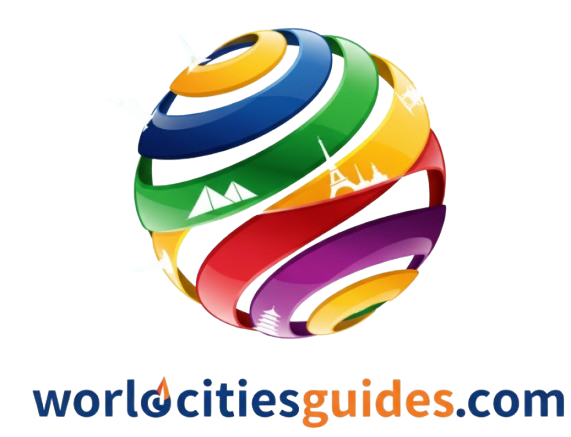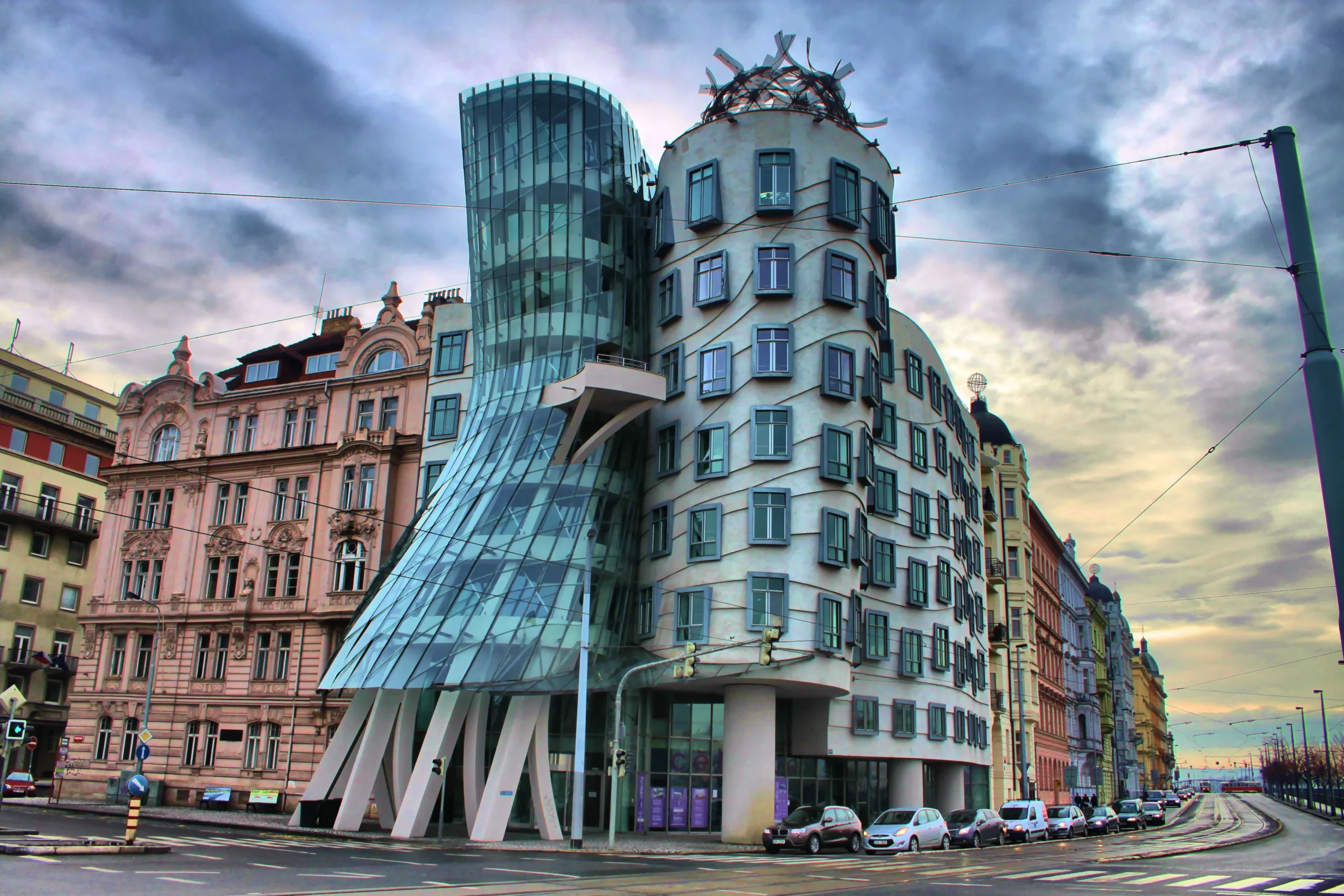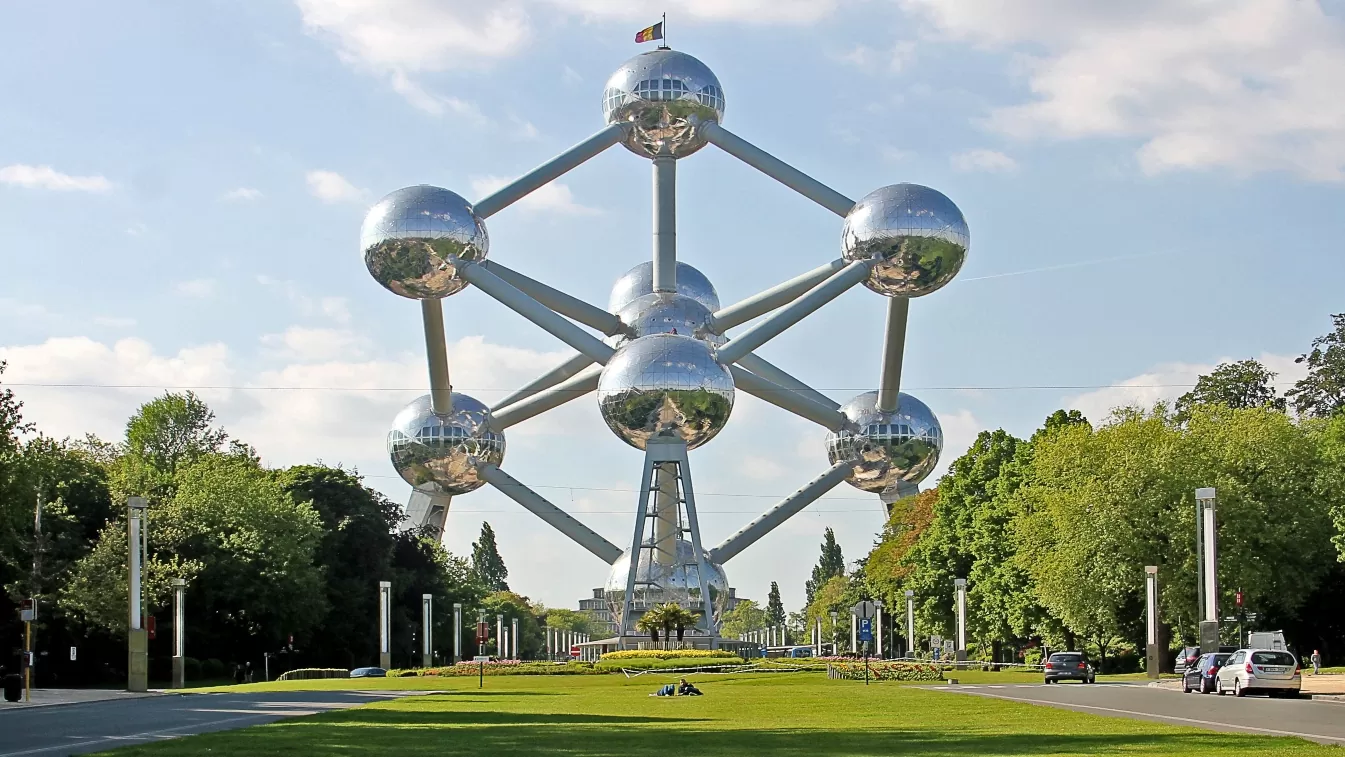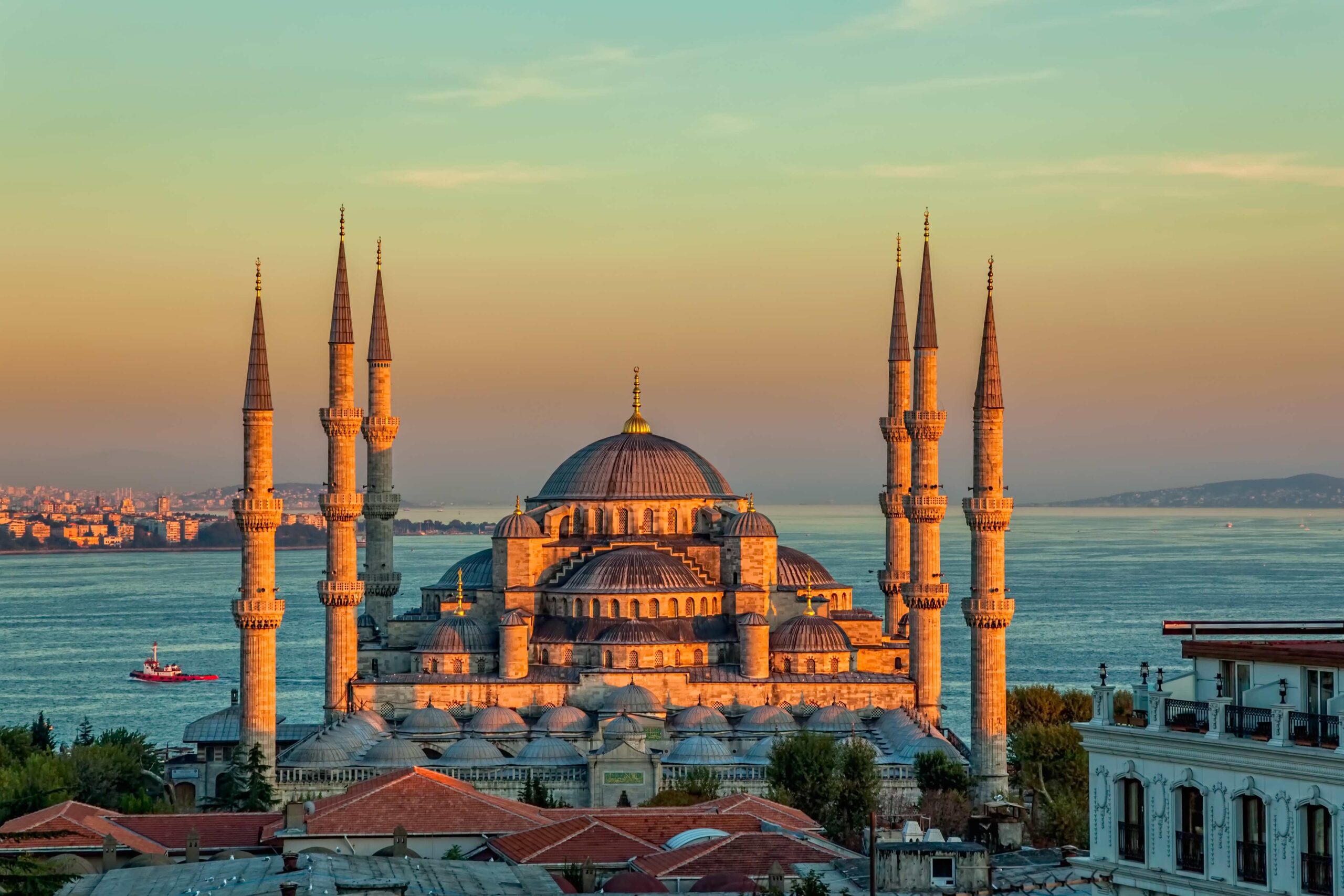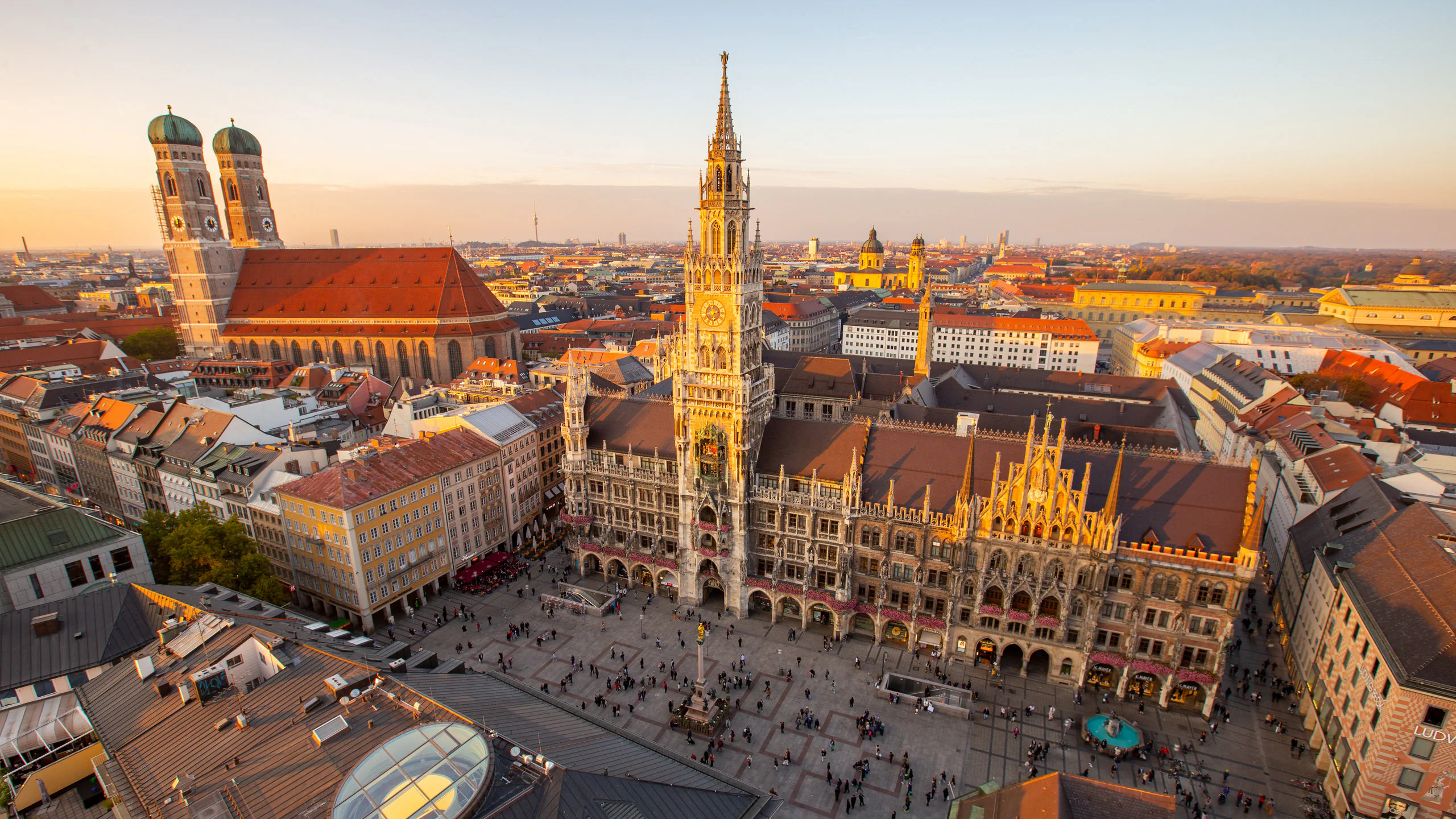Prague known as the ‘city of a hundred spires” is a gem in the midst of Central Europe. It combines the centuries and liveliness of a city with… passages full of metaphorical whispers. Visiting Prague is a walk through history, where Gothic cathedrals sit alongside Baroque squares and the buzz of modern life jostles with impressions of the medieval.
A BRIEF HISTORY
The history of Prague reaches far back to the Middle Ages. Its early significance as a town resulted from its being at a junction of east-west trade. Prague developed significantly over hundreds of years, first as the seat of the Bohemian kings and then became one of several capitals of the Holy Roman Empire. The 14th century was a golden era, when the city was being transformed — this is the age of the iconic Charles Bridge, of Prague’s ascent as an epicenter of culture and learning and rulers.
Along the way, Prague reinvented itself through upheavals — wars, empires, religious transituions and the rise of the Austro-Hungarian Empire — continually adapting and expanding. It has seen turbulent times in the 20th century with the creation of Czechoslovakia after World War I, Nazi occupation during a war and decades under Soviet-backed communist rule, as well as anti-Soviet protests driven down by Russian tanks during the Prague Spring and finally the Velvet Revolution in 1989. Following a peaceful split with Slovakia in 1993, Prague remained the Czech capital.
This cultural tapestry has bequeathed Prague a built environment colorful in style: Romanesque, Gothic, Renaissance, Baroque, Rococo, Art Nouveau, Cubist and modern glass-and-steel. Each district is a new chapter of its story.
POPULATION, LANGUAGE AND CURRENCY
The population of Prague is around 1.3 million. The metroplex’s population is approximatelly 1.9 million residents, which further splits to two independent countries making it a substantial urban centre in Central Europe. Local population, with the mix of persons born in Czech Republic, smaller minorities & expats and international students from all around create a cosmopolitan rhythm of life.
The primary language is Czech. It is a West Slavic language, which also include Slovak and Polish but not German or English. English is widely spoken in tourist areas and by many of the younger population; hospitality staff also avidly speak German, Russian or, occasionally, French.
The local currency is the Czech koruna (CZK). The Czech Republic belongs to the European Union, but has not adopted the euro. The koruna is still in everyday use, and when you pay for a tram ticket, a meal or a souvenir — it’s all conducted in CZK.
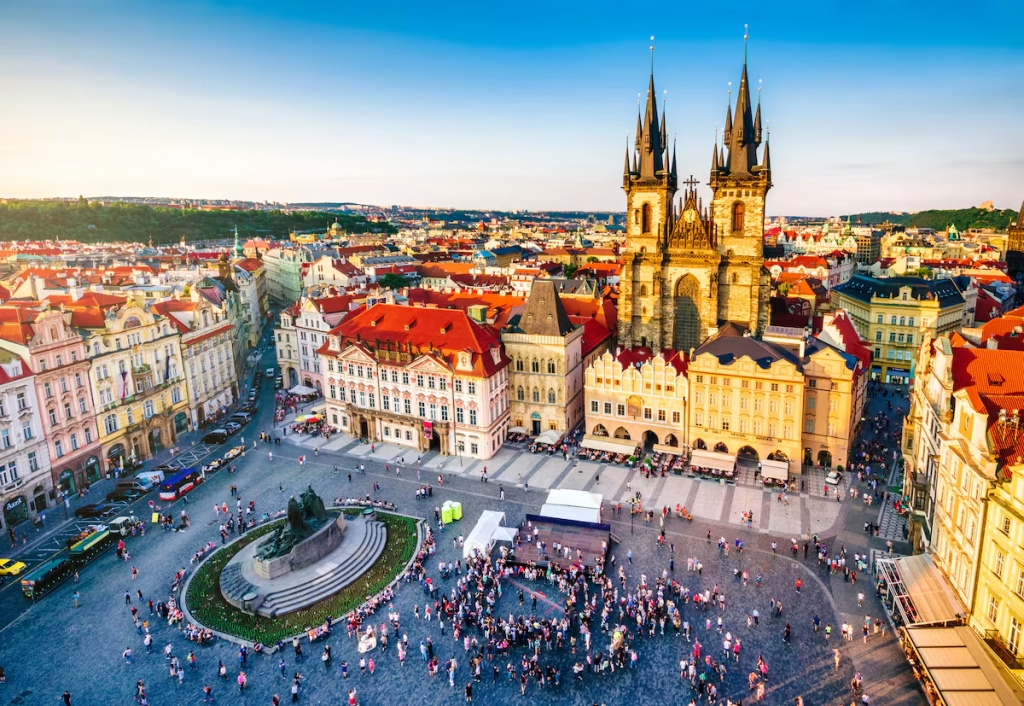
ELECTRICITY AND CLIMATE
For those who carry electronics, the electricity system is 230 volts/50 Hz If you travel to Prague by plane paid in euros. The plugs are the round-pronged “Type E” plug, common in many parts of continental Europe, so don’t forget to check your adapters (and your devices).
The climate in Prague is oceanic but also temperate continental. Winters (from December to February) are cold with average lows that frequently fall below freezing and a dusting of snow providing a fairy-tale icing for the historic rooftops. Spring and fall are transitional — crisp, sometimes rainy, unpredictable — but they can show off Prague’s colors and charm. Summers (June-August) are comfortably warm, with highs frequently in the 25-30°C range, and sometimes reaching into the low 30s. There may be periodic heat waves that drive the mercury even higher. precipitation flows fairly consistently throughout the year, with slightly wetter months in late spring and early summer.
CULINARY FLAVORS: WHAT (AND WHERE) TO EAT
Czech cuisine is tasty, nourishing, and full of traditions. Although the main cities, including the capital, offer a mix of classic Czech meals, local avant-garde dishes, cozy cafes, and intercultural options. Such a meal comprises svíčková na smetaně, a braised beef sirloin in creamy vegetable sauce with dumplings; goulash is a rich beef stew with bread or dumplings, roast pork with sauerkraut and dumplings, and smažený sýr, a slab of cheese coasted in breadcrumbs is a popular local. You may also add potato pancakes, pickled vegetables, and rye or oat bread. Fruits such are apple strudel, fruit dumplings, and nut roll served with whipped cream satisfy the dessert tastes. As a cultural center for artists and tourists, Prague has developed own gastronomy. The capital has many vegan laying and Asian and Middle Eastern cuisines, beer pubs, bistros, and representatives of the fine dining sphere. However, for the genuine experience, one should find a hospoda in a less corporate place.
GETTING AROUND: TRANSPORT IN PRAGUE
Prague has great public transportation facilities. It includes:
Trams: Efficient, extensive, and frequent. They pass through historical neighbourhoods and suburbs. A tram is not only useful, but charming — you might sail at dusk through the Charles Bridge or along narrow alleys.
Metro: Prague’s three-line (A, B and C) subway is efficient and easy to manage. It’s quick, it’s reliable, it’s clean and links to key parts of the city to connect with tram lines and bus routes.
Buses: More relevant for the peripheries or parts of the capital not served by tram or metro.
Funicular: Maybe you like funicular railways, that go up to Petřín Hill; it’s also useful if a little bit of scenic travelling.
Paddle boats / ferry on the river: You can also catch a river ferry or a paddle boat on the Vltava River for an alternative and picturesque journey.
Walk: Many historic areas are compact and reward discovery on foot — the best way to find hidden courtyards, baroque alleys and quiet corners.
Bikes / scooters: In the last few years, there has been a proliferation of bike rental and electric scooter services; some streets and a number of parks are well suited for cycling.
Tickets are interchangeable: one ticket works on all tram, metro and buses for a certain amount of time (30 minutes, 90 minutes and day cards). Multi-day passes are also useful for travelers. Don’t forget to validate (stamp) your ticket once you are on board a tram, or when entering an underground station — Prague is strict and checks for proper fares & imposes fines on those without a validated ticket.

SAFETY AND PRACTICAL MATTERS
Prague is generally considered a safe city for both homegrown and visiting expats. Violent crime is uncommon, and most tourist visits are uneventful. Nevertheless, as with all large cities, you do need to be aware of petty crime – particularly pick pocketing in busy areas, tram stations, bridges and tourist hot spots. Keep your valuables close and do not display wealth in poor areas (use hotel room safes or lockers).
Walking after dark is quite safe in central districts, but in more outlying areas or unlit back streets, normal urban caution should be exercised. Take licensed taxis or use a ride-sharing app rather than hailing arbitrary vehicles. In very cold or icy conditions, mind your step: cobblestone streets and narrow pavement edges can turn icy.
“A useful tip: keep a small card with local emergency telephone numbers and your hotel address in Czech — if you need to ask someone for help this can be invaluable.” Also, many of the pharmacies, shops and public offices in central Prague will speak enough English to help you if you’re in trouble.
MAIN TOURIST ATTRACTIONS
There’s quite a bit to see in Prague, from majestic cathedrals to hidden gardens. Here is a sampling of must‑visit highlights, as well as places hidden in the corners:
- Prague castle (Pražský hrad)
This huge place, built on a hill overlooking the city, is arguably Prague’s most iconic sight. Its features are the Gothic St. Vitus Cathedral, former seat of royal palaces, ornamental golden alleyways, gardens and museums. Its nooks, towers and terraces are so expansive that you could easily spend all day running around and getting high (altitude-wise) while feasting your eyes on panoramic views of the city.
- Charles Bridge (Karlův most)
A medieval slab of a bridge draped in sculpture that joins Castle district with Lesser Town (Malá Strana). The views of the river, Old Town spires and daily parade of musicians and artists dotted along the bridge make it an unforgettable experience, but be prepared for crowds — the early morning or after dusk is often the quietest time to cross.
- Old Town Square (Staroměstské náměstí) and the Astronomical Clock
Gothic churches, colorful facades, street performers, cafes and the world-famous astronomical clock (the Orloj) decorate the lanes of this magical city’s historic core. Each hour, a little mechanical figures pop out to entertain passersby. Nearby are the Church of Our Lady before Týn and the Gothic Old Town Hall tower.
- Jewish quarter (Josefov)
An emotional district with synagogues, museums and a centuries-old Jewish cemetery. It is a tale of the long presence of Jews in Prague, its vibrant intellectual life and how it was shattered tragically by events of the 20th century.
- Lesser town (Malá Strana)
This area below the Castle does indeed look like a postcard: cobbled lanes, baroque palaces, secret gardens and ornate churches. Stroll down to the Vltava embankment or up to the Petřín Hill.
- Petřín Hill and observation tower
An urban oasis, reached by funicular or walking trail. On its summit is the Petřín Tower (mini Eiffel‑style), commanding panoramic views over the city. The hill also contains rose gardens, mirrors maze and places to stop and rest.
- Wenceslas square (Václavské náměstí)
A wide boulevard running the length of the New Town (Nové Město) and lined by shops, cafes, hotels, offices — and history (including in its most recent incarnation). National Museum stands at its northern end.
- Dancing house (Tančící dům)
A modern architectural marvel — two towers that spiral like a dancing couple. It makes for a strong contrast with Prague’s more typical skyline. For sweeping views of the city, stop by a bistro on its top floor, or simply take in its shape from along the riverbank.
- Vyšehrad
This historic fort, south of the city center on a hill, is usually less crowded but with a history that stretches even further back and an aura of serenity. It may be touristy, but it has old fortification walls, a pretty cemetery where many famous Czechs are buried, and nice views over the Vltava.
- Kampa Island and Lennon wall
A tiny green island in the river by Charles Bridge, with some nice paths and art installations, cafés and views on the bridges. Near the church, the Lennon Wall is a riot of color celebrating freedom and passion in its ever-changing tribute to art, messages and graffiti.
OTHER ASPECTS WORTH KNOWING
Culture and the arts
Prague’s heart is a fount of culture. It has also been home to some of the most famous composers (Dvořák, Smetana), writers (Kafka, Hašek) and artists. The city is studded with theaters, concert halls, galleries and opera houses. The classical music tradition is alive — visiting a chamber concert in a baroque chapel or hearing a symphony performance in an opulent hall is part of the Prague experience.
Festivals and events
Film festivals, music events (jazz, alternative and classical), literary meetings and Christmas and Easter markets complete the year. When you can travel If you have flexible dates, travelling to the beat of one of these local rhythms might work for you.
Day trips and surroundings
Prague is an excellent base from which to explore nearby gems: fairytale town Český Krumlov, the bone-chapel of historic Kutná Hora, the gothic fortress Terezín, a wine region just south of the city or the rolling Bohemian countryside. It’s easy to travel by train and bus, and prices are cheap.
Practical tips for visitors
When to Go: Late spring (May–June) and early autumn (September) can bring comfortable temperatures and less crowds. And in the summer it’s loud, winter it’s amazing — particularly during the holidays — and cold.
Where to Stay: Prague has it all when it comes to accommodations — boutique hotels in old buildings, guesthouses for getting away from the city life and modern hotels close to public transportation. Being closer to a tram or metro line also makes it that much easier to discover more.
Walking Shoes: It’s all cobblestones, steep lanes, and streets that are sometimes a bit slippery from a fresh rain or uneven in some spots, so you’re definitely gonna want some good walking shoes.
Language Bonus: As little as a few Czech phrases (hello, please, thank you) really break the ice with locals. Many welcome the effort.
Safety of Water and Tap: Tap water in Prague is usually fine to consume. Bring a reusable bottle; there are water fountains in parks and public places.
Tipping: In cafés and restaurants, a tip of around 5–10% is normal if the service is good.
Prague is one of those cities that haunts the memory: the golden sheen of dawn on St. Vitus’s spires, the stifled drone of trams down cobbled byways, the hushed murmur of the Vltava at twilight and a centuries-old susurration within every courtyard. A city where the old and new are in constant battle; a place where every street appears destined to tell a story; and where culture, architecture, tradition and daily grind meets in an elegant mosaic.
Cool on the outside, but warm and welcoming when you give them your time, there’s always more to Prague than meets the eye.Whether it’s castles or classical music that floats your boat; local foods or just wandering through hidden places… Prague can be bigger than yourself. Block by block, day by day, the city reveals itself — sometimes quietly, sometimes with grand flourish — and draws you into its centuries-old embrace.
